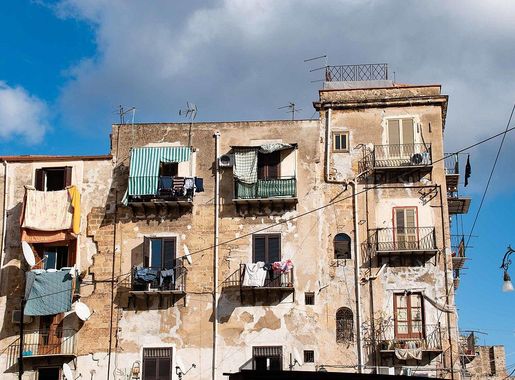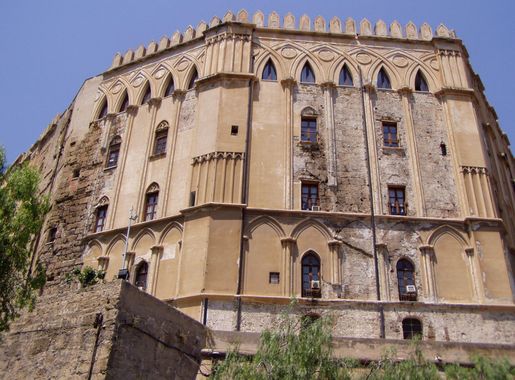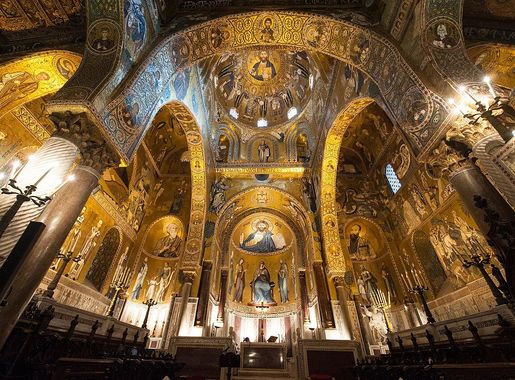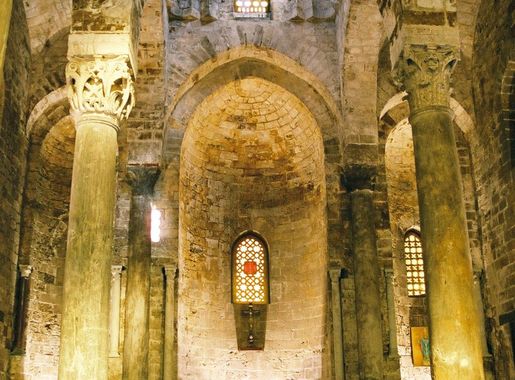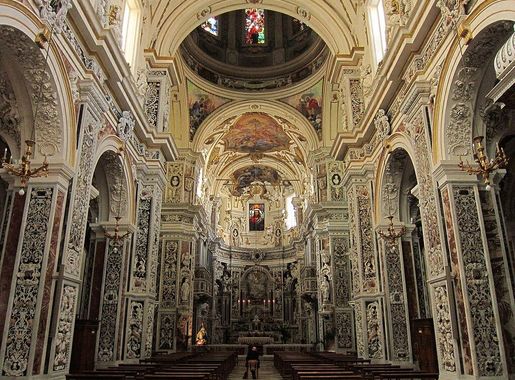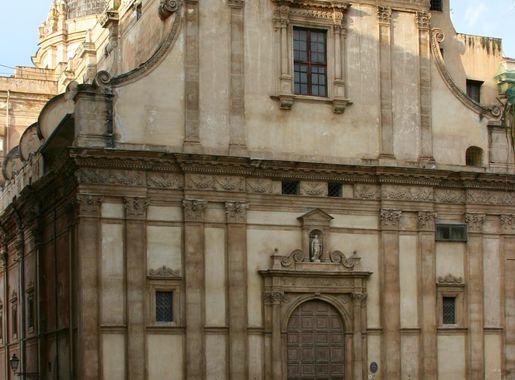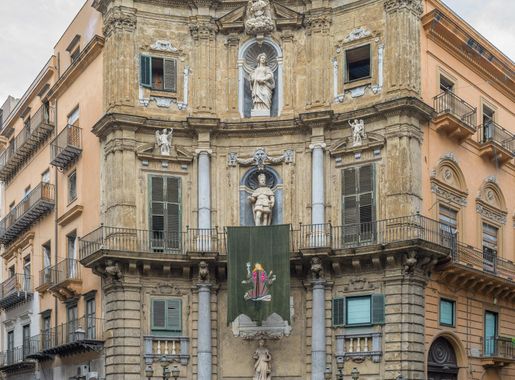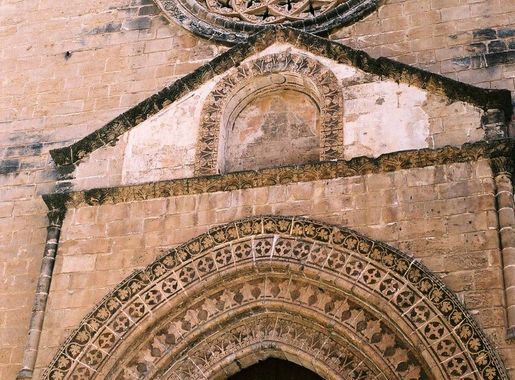
Albergheria: The Heartbeat of Palermo's History and Culture
Discover Albergheria in Palermo: A Historic Neighbourhood Alive with Markets, Palaces, and Cultural Riches.
Albergheria is a captivating neighbourhood in Palermo, Italy, where history and culture come alive at every corner. This vibrant district is renowned for its rich tapestry of historical sites, bustling markets, and a lively local atmosphere that promises an authentic Sicilian experience. Begin your exploration at the Ballarò Market, one of Palermo's oldest and most famous markets. Here, the air is filled with the enticing aromas of street food, fresh produce, and the spirited calls of vendors. It's a feast for the senses and a perfect spot to sample traditional Sicilian delicacies such as arancini and cannoli. Venture further into Albergheria, and you'll encounter stunning architectural marvels like the Palazzo dei Normanni, also known as the Royal Palace of Palermo. This UNESCO World Heritage site boasts a blend of Norman, Arab, and Byzantine influences, with the glittering Cappella Palatina as its crown jewel. The neighbourhood is also home to the Church of San Giovanni degli Eremiti, notable for its striking red domes and serene garden. As you wander through the narrow streets, you'll uncover layers of history manifested in ancient ruins, medieval buildings, and Baroque churches. Albergheria is also dotted with small artisan shops and cafes where you can pause to enjoy a coffee or indulge in local pastries while observing the daily life of Palermo's residents. One of the unique aspects of Albergheria is its mix of old and new. Alongside historic structures, you'll find contemporary street art and vibrant cultural events, reflecting Palermo's dynamic and evolving identity.
Local tips in Albergheria
- Visit early in the morning to experience Ballarò Market at its liveliest and to avoid the midday heat.
- Wear comfortable shoes as the neighbourhood's cobblestone streets and alleys are best explored on foot.
- Carry some cash, as many local vendors and small eateries might not accept credit cards.
- Check the opening hours of major sites like the Palazzo dei Normanni, as they may close for a few hours in the afternoon.
- Take some time to explore the less touristy streets where you can find local crafts and hidden gems.
Albergheria: The Heartbeat of Palermo's History and Culture
Albergheria is a captivating neighbourhood in Palermo, Italy, where history and culture come alive at every corner. This vibrant district is renowned for its rich tapestry of historical sites, bustling markets, and a lively local atmosphere that promises an authentic Sicilian experience. Begin your exploration at the Ballarò Market, one of Palermo's oldest and most famous markets. Here, the air is filled with the enticing aromas of street food, fresh produce, and the spirited calls of vendors. It's a feast for the senses and a perfect spot to sample traditional Sicilian delicacies such as arancini and cannoli. Venture further into Albergheria, and you'll encounter stunning architectural marvels like the Palazzo dei Normanni, also known as the Royal Palace of Palermo. This UNESCO World Heritage site boasts a blend of Norman, Arab, and Byzantine influences, with the glittering Cappella Palatina as its crown jewel. The neighbourhood is also home to the Church of San Giovanni degli Eremiti, notable for its striking red domes and serene garden. As you wander through the narrow streets, you'll uncover layers of history manifested in ancient ruins, medieval buildings, and Baroque churches. Albergheria is also dotted with small artisan shops and cafes where you can pause to enjoy a coffee or indulge in local pastries while observing the daily life of Palermo's residents. One of the unique aspects of Albergheria is its mix of old and new. Alongside historic structures, you'll find contemporary street art and vibrant cultural events, reflecting Palermo's dynamic and evolving identity.
Iconic landmarks you can’t miss
Norman Palace
Discover the Norman Palace in Palermo, a UNESCO World Heritage Site rich in history, stunning architecture, and cultural significance.
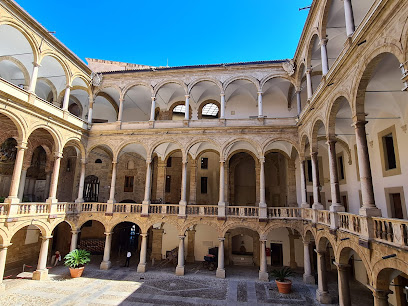
Palazzo Abatellis
Explore the rich artistic heritage of Sicily at Palazzo Abatellis, a stunning museum housed in a historic palace in Palermo.
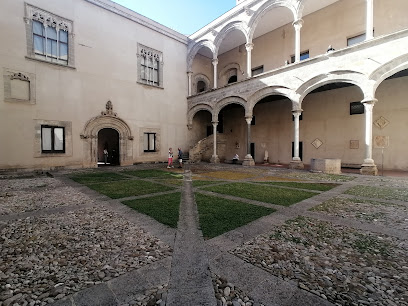
Palazzo Chiaramonte Steri
Explore the historic Palazzo Chiaramonte Steri in Palermo, a castle that offers a deep dive into Sicilian heritage through its stunning architecture and fascinating exhibits.
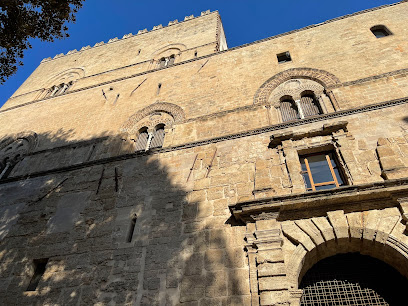
Palazzo Pretorio
Discover the architectural splendor and historical significance of Palazzo Pretorio, a must-visit landmark in the heart of Palermo.
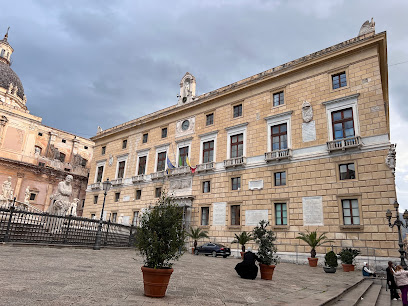
Torre di San Nicolò di Bari
Explore the enchanting Torre di San Nicolò di Bari in Palermo, where history meets breathtaking views in the heart of Sicily.
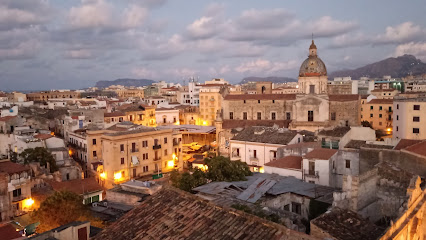
Palazzo Alliata Villafranca
Explore Palazzo Alliata Villafranca: A Cultural Gem in Palermo's Art Scene, Blending History and Modernity in a Stunning Setting.
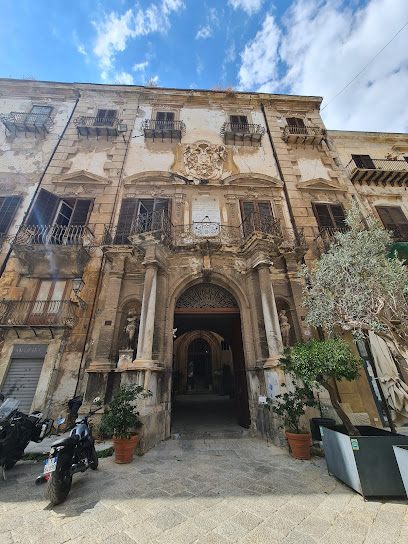
Il Palazzo Alliata di Pietratagliata
Explore Il Palazzo Alliata di Pietratagliata, a historical gem in Palermo, featuring exquisite architecture and a rich cultural heritage.
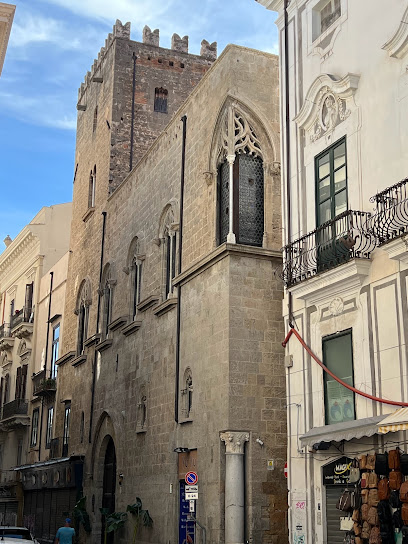
Natività Bronzea Monumentale
Explore the Natività Bronzea Monumentale in Palermo, where stunning bronze sculptures bring Sicilian history and art to life in a captivating open-air setting.
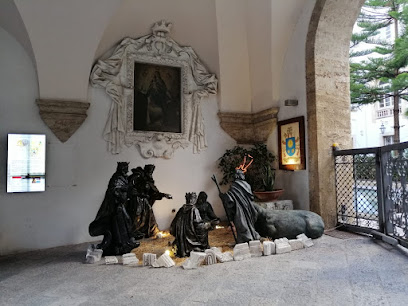
Obelisco alle Tredici Vittime della Rivoluzione del 1860
Explore the Obelisk of the Thirteen Victims in Palermo, a striking war memorial that honors history amidst the vibrant city life.
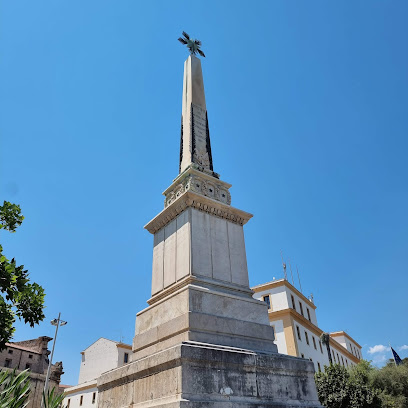
Monumento ai Caduti nella Lotta contro la Mafia
Discover the powerful history behind the Monumento ai Caduti nella Lotta contro la Mafia in Palermo, a tribute to courage and resilience against organized crime.
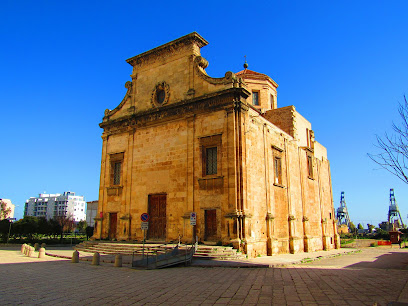
CENTRO STORICO DI PALERMO
Discover the enchanting streets of Centro Storico di Palermo, a UNESCO World Heritage Site filled with rich history, stunning architecture, and vibrant local culture.
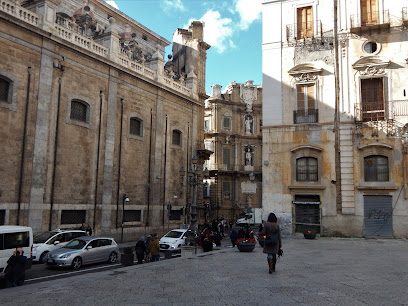
Murale “Faces are Places”
Explore Palermo's vibrant open air museum, Murale 'Faces are Places', where stunning street art brings the city's rich culture to life.
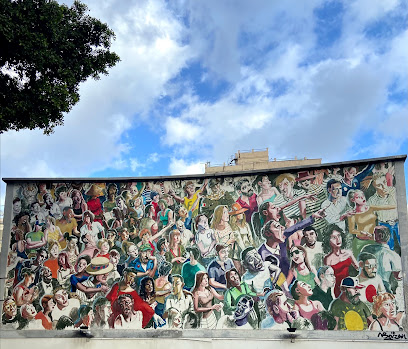
Unmissable attractions to see
Catacombe dei Cappuccini
Discover the haunting beauty of Catacombe dei Cappuccini, a unique burial site in Palermo offering a glimpse into the historical practices of mummification.
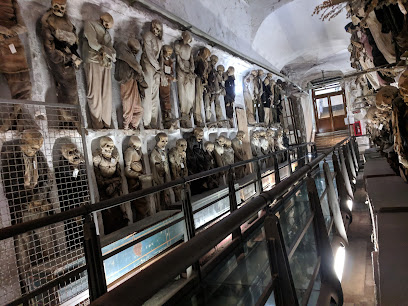
Fontana Pretoria
Discover the stunning Fontana Pretoria in Palermo, a Baroque masterpiece filled with intricate sculptures and rich history in the heart of the city.
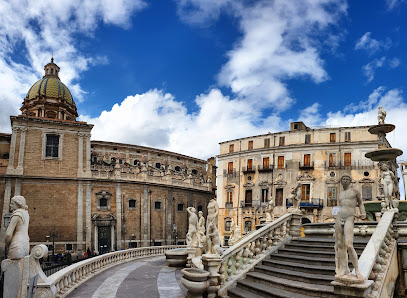
Palazzo Conte Federico - Museum
Discover the rich history and stunning architecture of Palazzo Conte Federico, a must-visit museum in the heart of Palermo's vibrant culture.
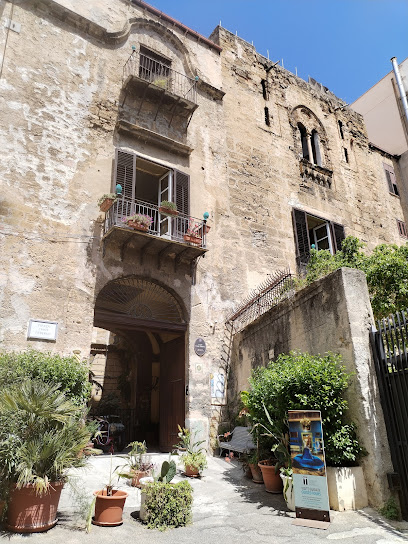
Torre di San Nicolò di Bari
Explore Torre di San Nicolò di Bari: a historical landmark offering breathtaking views and a glimpse into Palermo's rich cultural heritage.
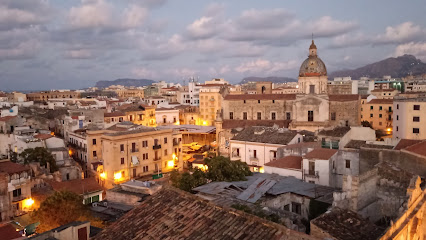
Statua di Santa Rosalia
Discover the exquisite Statua di Santa Rosalia in Palermo, a stunning symbol of devotion and artistic brilliance in the heart of Sicily.
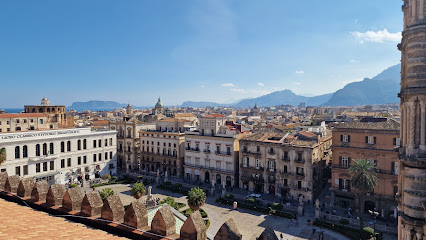
Essential places to dine
Ristorante La Galleria
Discover authentic Sicilian flavors at Ristorante La Galleria, where every dish tells a story of tradition and passion.
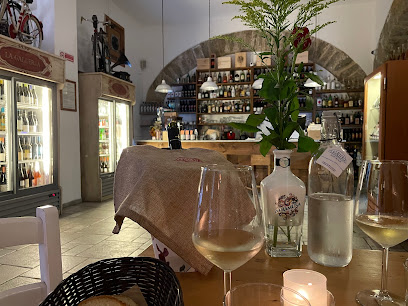
RISTORANTE PRIMI PIATTI
Experience the essence of Italy at Ristorante Primi Piatti - where every dish tells a story.
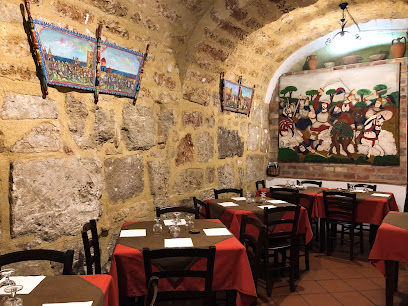
Osteria Pane e Alivi
Experience authentic Sicilian flavors at Osteria Pane e Alivi in Palermo – where fresh ingredients meet traditional recipes.
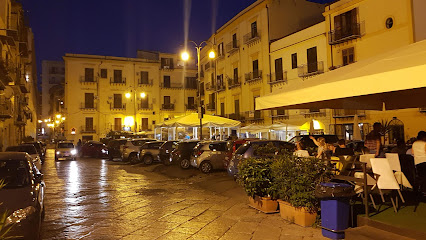
Eremiti Restaurant
Experience authentic Southern Italian cuisine at Eremiti Restaurant in Palermo – where every dish tells a story.
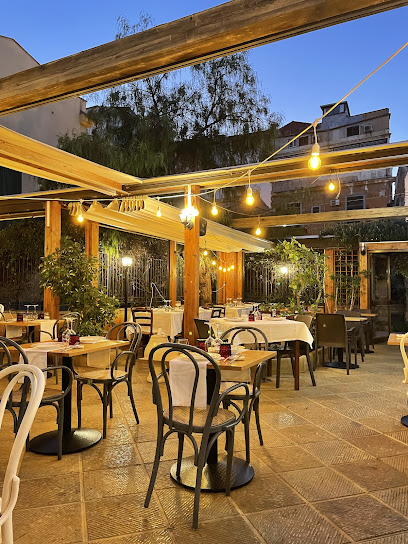
Odori e sapori al vecchio monte
Discover the authentic flavors of Sicily at Odori e Sapori al Vecchio Monte in Palermo - where culinary excellence meets warm hospitality.
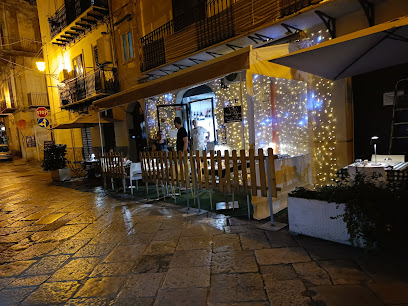
Ponticello Taverna Gastronomica
Experience authentic Sicilian cuisine at Ponticello Taverna Gastronomica in Palermo – where tradition meets culinary artistry.
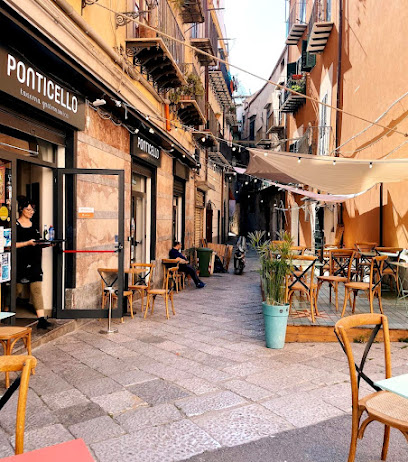
Al Fondaco del Conte
Discover authentic Sicilian flavors at Al Fondaco del Conte – where every meal is a culinary journey through Italy's rich gastronomic heritage.

A'Cuncuma Restaurant
Experience the essence of Sicilian cuisine at A'Cuncuma Restaurant in Palermo - where tradition meets culinary excellence.
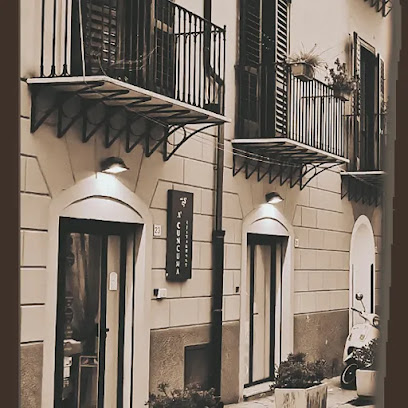
Ristorante Ferro
Discover authentic Italian cuisine at Ristorante Ferro, where creativity meets tradition in the heart of Palermo's culinary scene.
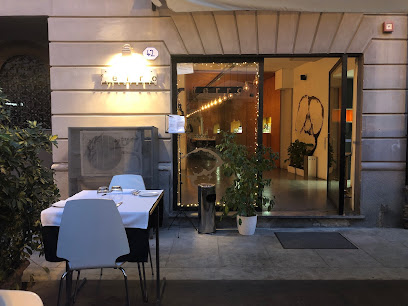
N/a
Discover authentic Sicilian cuisine at Via Ballaro in Palermo - a culinary journey through traditional flavors and warm hospitality.
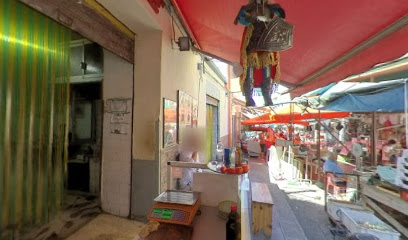
Restaurant
Discover authentic Sicilian flavors at this charming lunch spot in Palermo's vibrant heart.
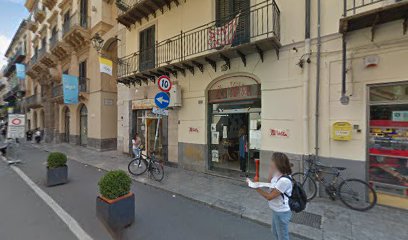
Markets, malls and hidden boutiques
Antique Market
Explore Palermo's Antique Market for unique vintage treasures and local craftsmanship in a vibrant and historic setting.
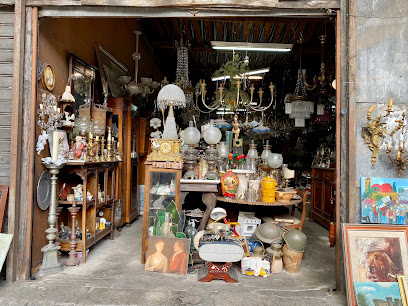
Ridding Market dell'Usato
Discover unique antiques, vintage clothing, and collectibles at Ridding Market dell'Usato in Palermo – a treasure trove for every traveler!
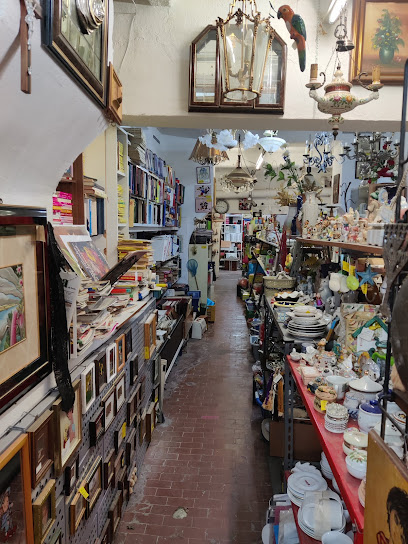
Avaliani
Discover Avaliani: Palermo's premier destination for unique women's clothing and handmade jewelry, reflecting the essence of Sicilian craftsmanship.
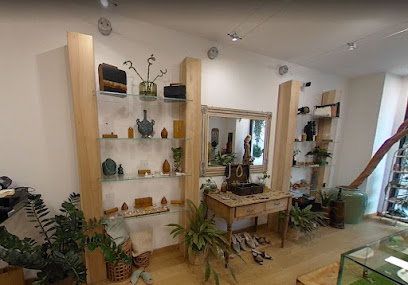
Magazzini Anita
Explore the charm of vintage fashion at Magazzini Anita, a unique treasure trove in Palermo offering high-quality, timeless clothing and accessories.
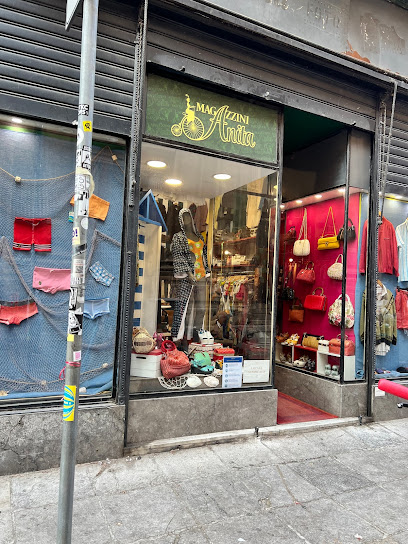
Sicily shopping
Explore unique souvenirs that embody the rich culture and artistry of Sicily in this charming Palermo store, perfect for travelers seeking authentic keepsakes.

CutieCuticchi
Explore CutieCuticchi, Palermo's charming gift shop offering unique handcrafted souvenirs, paintings, and sculptures that capture the spirit of Sicily.
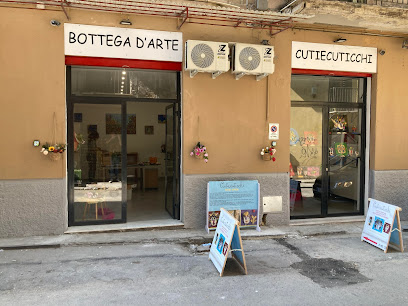
Souvenirs
Explore the charm of Sicily at Souvenirs in Palermo, where unique handcrafted treasures await every traveler seeking cultural keepsakes.
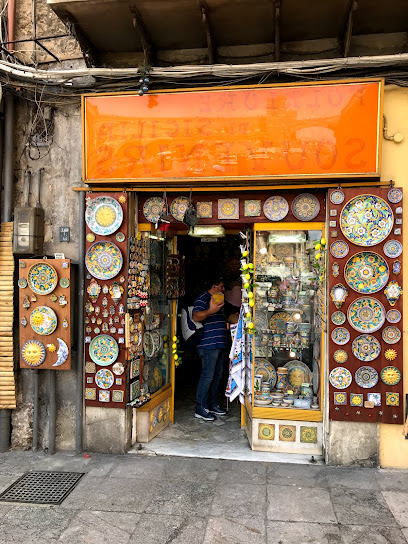
Cassaro Souvenir
Explore authentic Sicilian souvenirs at Cassaro Souvenir, where culture and craftsmanship converge in the heart of Palermo.
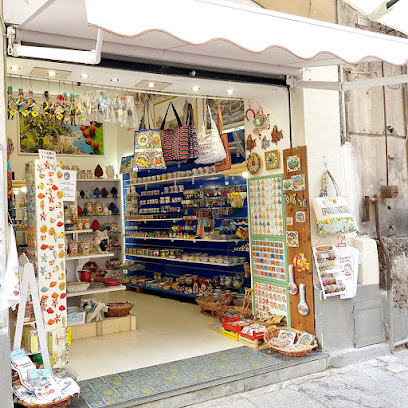
À Putia
Explore a treasure trove of handcrafted Sicilian souvenirs and unique gifts at À Putia in the heart of Palermo.
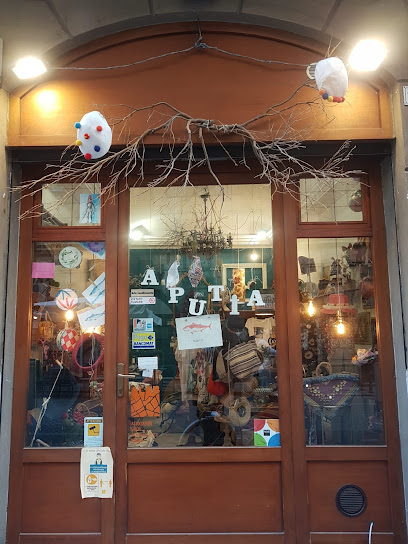
Shajid Store
Discover unique gifts and souvenirs at Shajid Store, a charming shop in the heart of Palermo, Italy, perfect for every traveler.
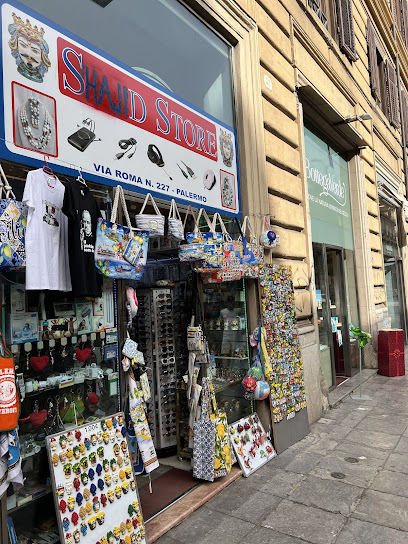
Essential bars & hidden hideouts
Malox Cult
Experience the vibrant nightlife of Palermo at Malox Cult, a lively pub offering affordable drinks and a welcoming atmosphere.

Mak Mixology
Experience Palermo's nightlife at Mak Mixology, where innovative cocktails meet live jazz in an unforgettable setting.

BAR MAROCCO
Discover the sweet flavors of Sicily at Bar Marocco, a vibrant bar and pastry shop serving delightful pastries and refreshing ice creams in Palermo.
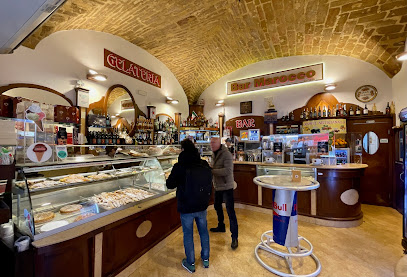
Bar Liberty
Experience Palermo's vibrant bar culture at Bar Liberty, where every sip tells a story of Sicilian tradition and modern flair.
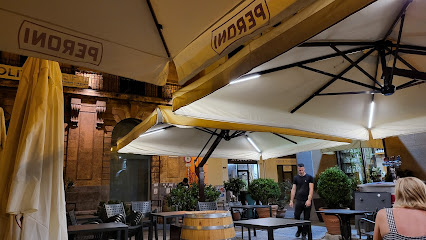
Bottiglieria Vinuccio
Discover Bottiglieria Vinuccio in Palermo - an exquisite pub and wine club offering fine wines, live music, and a cozy atmosphere for all wine enthusiasts.
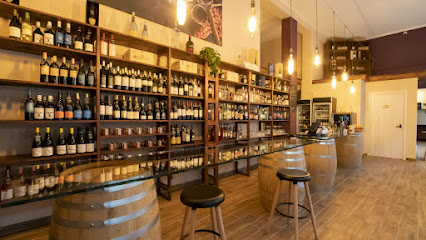
Chiasso Bar
Experience the vibrant nightlife at Chiasso Bar in Palermo, where excellent drinks and a lively atmosphere create unforgettable memories.
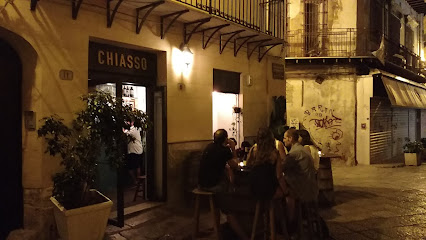
Break pub
Experience the vibrant nightlife of Palermo at Break Pub, where locals and tourists gather for drinks, music, and unforgettable moments.

Wine Bar Carpe Diem
Experience the vibrant atmosphere of Wine Bar Carpe Diem in Palermo, where delicious sandwiches, fine wines, and live music create unforgettable moments.
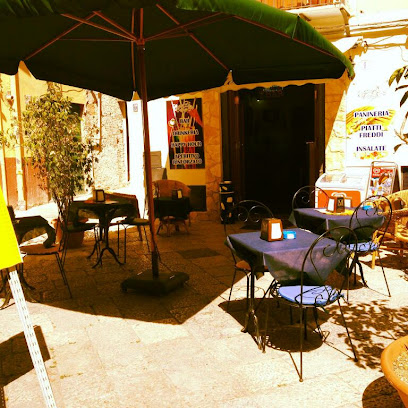
Bahlarà
Discover Bahlarà in Palermo: A vibrant bar offering a taste of Sicilian culture with a cozy atmosphere and delightful beverages.
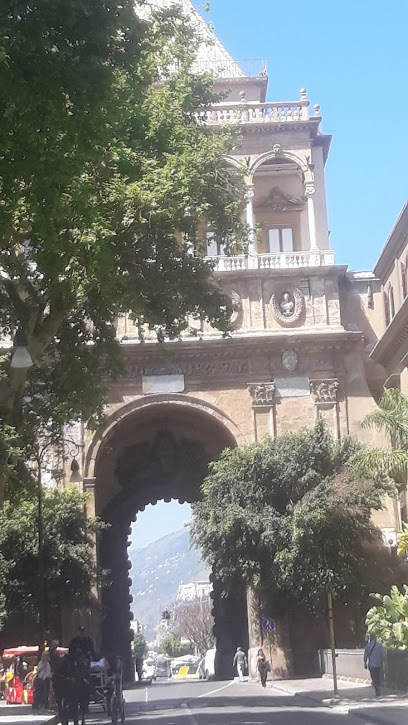
Reset Pub Drinkeria
Experience the vibrant nightlife of Palermo at Reset Pub Drinkeria, where local flavors and lively ambiance await every visitor.
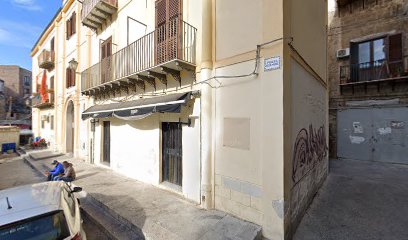
Local Phrases
-
- HelloCiao
[chow] - GoodbyeArrivederci
[ah-ree-veh-der-chee] - YesSì
[see] - NoNo
[noh] - Please/You're welcomePer favore/Prego
[pair fah-voh-reh/preh-goh] - Thank youGrazie
[grah-tsyeh] - Excuse me/SorryScusa/Mi dispiace
[skoo-sah/mee dee-spyah-che] - How are you?Come stai?
[koh-meh stah-ee] - Fine. And you?Bene. E tu?
[beh-neh. eh too] - Do you speak English?Parli inglese?
[pahr-lee een-gleh-zeh] - I don't understandNon capisco
[nohn kah-pee-skoh]
- HelloCiao
-
- I'd like to see the menu, pleaseVorrei vedere il menù, per favore
[vohr-ray veh-deh-reh eel meh-noo, pair fah-voh-reh] - I don't eat meatNon mangio carne
[nohn mahn-joh kahr-neh] - Cheers!Salute!
[sah-loo-teh] - I would like to pay, pleaseVorrei pagare, per favore
[vohr-ray pah-gah-reh, pair fah-voh-reh]
- I'd like to see the menu, pleaseVorrei vedere il menù, per favore
-
- Help!Aiuto!
[ah-yoo-toh] - Go away!Vai via!
[vah-ee vee-ah] - Call the Police!Chiama la polizia!
[kyah-mah lah poh-lee-tsyah] - Call a doctor!Chiama un dottore!
[kyah-mah oon doh-toh-reh] - I'm lostMi sono perso
[mee soh-noh pehr-soh] - I'm illSono malato
[soh-noh mah-lah-toh]
- Help!Aiuto!
-
- I'd like to buy...Vorrei comprare...
[vohr-ray kohm-prah-reh] - I'm just lookingSto solo guardando
[stoh soh-loh gwar-dahn-doh] - How much is it?Quanto costa?
[kwan-toh koh-stah] - That's too expensiveÈ troppo caro
[eh troh-poh kah-roh] - Can you lower the price?Puoi abbassare il prezzo?
[pwah-ee ahb-bahs-sah-reh eel preh-tsoh]
- I'd like to buy...Vorrei comprare...
-
- What time is it?Che ore sono?
[keh oh-reh soh-noh] - It's one o'clockÈ l'una
[eh loo-nah] - Half past (10)Le dieci e mezza
[leh dyeh-chee eh meh-tsah] - MorningMattina
[maht-tee-nah] - AfternoonPomeriggio
[poh-meh-ree-joh] - EveningSera
[seh-rah] - YesterdayIeri
[yeh-ree] - TodayOggi
[oh-jee] - TomorrowDomani
[doh-mah-nee] - 1Uno
[oo-noh] - 2Due
[doo-eh] - 3Tre
[treh] - 4Quattro
[kwah-troh] - 5Cinque
[cheen-kweh] - 6Sei
[say] - 7Sette
[seh-tay] - 8Otto
[oh-ttoh] - 9Nove
[noh-veh] - 10Dieci
[dyeh-chee]
- What time is it?Che ore sono?
-
- Where's a/the...?Dove è un/il...?
[doh-veh eh oon/eel] - What's the address?Qual è l'indirizzo?
[kwahl eh leen-dee-ree-tsoh] - Can you show me (on the map)?Puoi mostrarmi (sulla mappa)?
[pwah-ee mohs-trar-mee (sool-lah mahp-pah)] - When's the next (bus)?Quando passa il prossimo (autobus)?
[kwahn-doh pahs-sah eel prohs-see-moh (ow-toh-boos)] - A ticket (to ....)Un biglietto (per ....)
[oon bee-lyet-toh (pair)]
- Where's a/the...?Dove è un/il...?
History of Albergheria
-
Albergheria's history can be traced back to the Arab conquest of Sicily in the 9th century. The Arabs introduced advanced agricultural techniques, architectural styles, and a new social order. This period saw the establishment of a vibrant multicultural society where Islamic, Christian, and Jewish communities coexisted. The architectural legacy from this era is evident in the narrow streets and intricate designs of the neighborhood.
-
In the 11th century, the Normans took control of Sicily, including Albergheria. This era was marked by a fusion of cultures, leading to the construction of remarkable structures such as the Palatine Chapel. The Normans' patronage of the arts and architecture transformed Albergheria into a center of medieval splendor, showcasing a blend of Byzantine, Islamic, and Norman styles.
-
During the 16th century, under Spanish rule, Albergheria experienced significant urban expansion. The neighborhood became a hub for nobility, leading to the construction of grand palaces and churches. This period also saw the rise of Baroque architecture, with structures such as the Church of San Giovanni degli Eremiti exemplifying the artistic trends of the time.
-
The 19th century was a time of great change for Albergheria, reflecting the broader socio-economic shifts in Palermo. The industrial revolution brought new economic opportunities, leading to an influx of workers and a demographic shift. This period also saw the introduction of public services and infrastructure improvements, although it often highlighted the stark contrasts between social classes within the neighborhood.
-
After World War II, Albergheria faced numerous challenges, including urban decay and economic decline. However, the neighborhood has shown remarkable resilience, with grassroots movements and community initiatives aimed at revitalizing its rich cultural heritage. Today, Albergheria is recognized for its vibrant markets, historic sites, and the revival of traditional craftsmanship, maintaining its identity amidst modern changes.
Albergheria Essentials
-
Albergheria is centrally located in Palermo, making it accessible from various neighbourhoods. From the main train station (Stazione Centrale), you can walk to Albergheria in about 15 minutes. Alternatively, several buses and trams connect the area to other parts of the city. For those arriving from the airport, the Falcone-Borsellino Airport is approximately 35 km away; shuttle buses and taxis are available for the journey into the city.
-
Albergheria is best explored on foot due to its compact size and narrow streets. Public transport options include buses and trams that frequently run through the area. Bicycles can also be rented from local shops, although cycling may be challenging in the bustling streets. Walking allows you to fully appreciate the historical architecture and local life.
-
While Albergheria is generally safe for tourists, it is advisable to exercise caution, especially in less crowded areas. Be aware of pickpockets in crowded markets and tourist spots, particularly near the Capo Market and the Ballarò Market. Avoid walking alone at night in poorly lit areas, and always keep your belongings secure.
-
In case of an emergency, dial 112 for police, medical, or fire services. The nearest hospital is Ospedale Civico, located a short distance from Albergheria. It’s advisable to carry a copy of your passport and any important documents in case you need to report a crime or seek medical assistance.
-
Fashion: Do dress modestly when visiting religious sites such as the Palatine Chapel. Avoid overly casual attire. Religion: Do respect local customs; it's customary to cover your shoulders and knees in churches. Public Transport: Do offer your seat to elderly passengers and be polite. Don’t eat or drink on public transport. Greetings: Do greet locals with a friendly 'Buongiorno' or 'Salve'. Eating & Drinking: Do try local street food such as arancini and panelle. Don’t refuse food offered by locals, as it can be seen as impolite.
-
To experience Albergheria like a local, visit the markets at Ballarò and Capo, where you can find fresh produce and traditional Sicilian foods. Engage with vendors for a more intimate experience of local culture. Consider joining a cooking class to learn how to prepare authentic Sicilian dishes. Visit the historic sites in the early morning or late afternoon to avoid crowds and enjoy a more peaceful atmosphere.
Trending Landmarks in Albergheria
-
Norman Palace
-
Palazzo Abatellis
-
Palazzo Chiaramonte Steri
-
Palazzo Pretorio
-
Torre di San Nicolò di Bari
-
Palazzo Alliata Villafranca
-
Il Palazzo Alliata di Pietratagliata
-
Natività Bronzea Monumentale
-
Obelisco alle Tredici Vittime della Rivoluzione del 1860
-
Monumento ai Caduti nella Lotta contro la Mafia
-
CENTRO STORICO DI PALERMO
-
Murale “Faces are Places”
Nearby Cities to Albergheria
-
Things To Do in Catania
-
Things To Do in Taormina
-
Things To Do in Marsalforn
-
Things To Do in Xaghra
-
Things To Do in Gozo
-
Things To Do in Xlendi
-
Things To Do in Xewkija
-
Things To Do in Mellieha
-
Things To Do in Qawra
-
Things To Do in Bugibba
-
Things To Do in Mgarr
-
Things To Do in St. Julian's
-
Things To Do in Mdina
-
Things To Do in Rabat
-
Things To Do in Sliema

